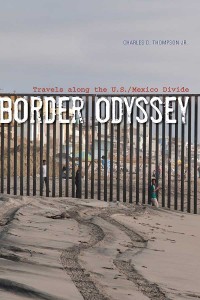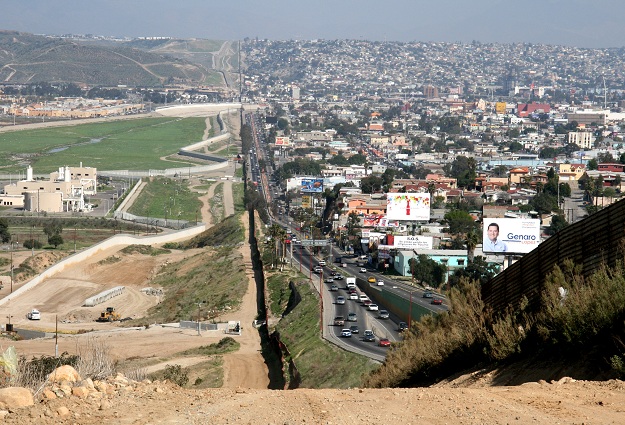What does the 1,969-mile border between the United States and Mexico have to do with North Carolina?
A North Carolina author delivers pages of answers in a book about his journey along the entire border, from Boca Chica in Texas on the Gulf of Mexico to San Diego, California on the Pacific Ocean.
 Charles D. Thompson, Jr., a Chatham County blueberry farmer turned author, filmmaker, activist, and Duke professor, tells the story of his border journey in his new book, Border Odyssey: Travels Along the U.S./Mexico Divide.
Charles D. Thompson, Jr., a Chatham County blueberry farmer turned author, filmmaker, activist, and Duke professor, tells the story of his border journey in his new book, Border Odyssey: Travels Along the U.S./Mexico Divide.
Thompson’s border journey begins at Whippoorwill Farm in Pittsboro, North Carolina, where, as Thompson writes, “in 1986, the border crossed me.”
He writes that five Mexican laborers who had “joined a river of Mexicanos flowing northward” began to work on his farm after first working in Pittsboro on “a chicken-butchering line thousands of miles from their homes – and in a county where almost no others besides blacks and whites had lived and worked for the past two centuries.”
Thompson’s concern for the welfare of these five men, who became his friends, and other similar border crossers led to years of activism, writing, and moviemaking to acquaint others with the extraordinary hardships these people face. This passion for the welfare of Mexican and Central American immigrants, both legal and illegal, drew him to the border itself to experience life and attitudes on both sides of the barrier.
To begin his cross-country trek, Thompson and his wife, Hope, flew to Texas and drove to Boca Chica, where the U.S.-Mexican border meets the Gulf of Mexico. There he found a lonely border point, with no fences, no towers, no border patrol, only a few fishermen taking advantage of the otherwise deserted coastline. Here the differences between the Mexican and the U.S. sides of the border were indistinguishable.
This peaceful area contrasted with other border points, where he found high fences, active border patrols, and long lines at checkpoints.
Thompson compares these barriers with the Berlin Wall, the Israeli West Bank separation barrier, and the no man’s land that divides the two Koreas.
Near Boca Chica is another North Carolina connection – or more accurately, a disconnection. At the Battle of Palmito Ranch on May 12 and 13, 1865, Confederate forces won a clear victory over three Union regiments that were attempting to close a nearby Confederate supply station. The Texas battle challenges North Carolina claims that the Civil War ended with the surrender at Bennett Place on April 26, 1865.
I started reading Border Odyssey because a trip along the U.S. Mexican border has long been on my bucket list. I have dreamed of putting my feet in the Rio Grande, visiting pairs of border cities like Laredo and Nuevo Laredo, El Paso and Juarez, and San Diego and Tijuana, with stops at Big Bend National Park and other places to experience the peoples and landscapes of a dry region.
Thompson delivers the travelogue I wanted. But his purpose is a more serious one, as he explains: “I needed to go to the place where countless innocent people had been kicked, cussed, spit on, arrested, detained, trafficked, and killed, all for the sake of working in the U.S. for a pittance. I wanted to go where it seemed our fears had superseded our sense of humanity… It would become clear… the border, la frontera, was more multifaceted and profound than anything we could have invented about it from afar.”
Thompson uses his travels to share his passion for the welfare of hard-working, good people and to persuade his readers that such people have been trapped and exploited by a flawed immigration system.
That passion has raised my hoped-for border travel to the top of my bucket list.



Comments on Chapelboro are moderated according to our Community Guidelines